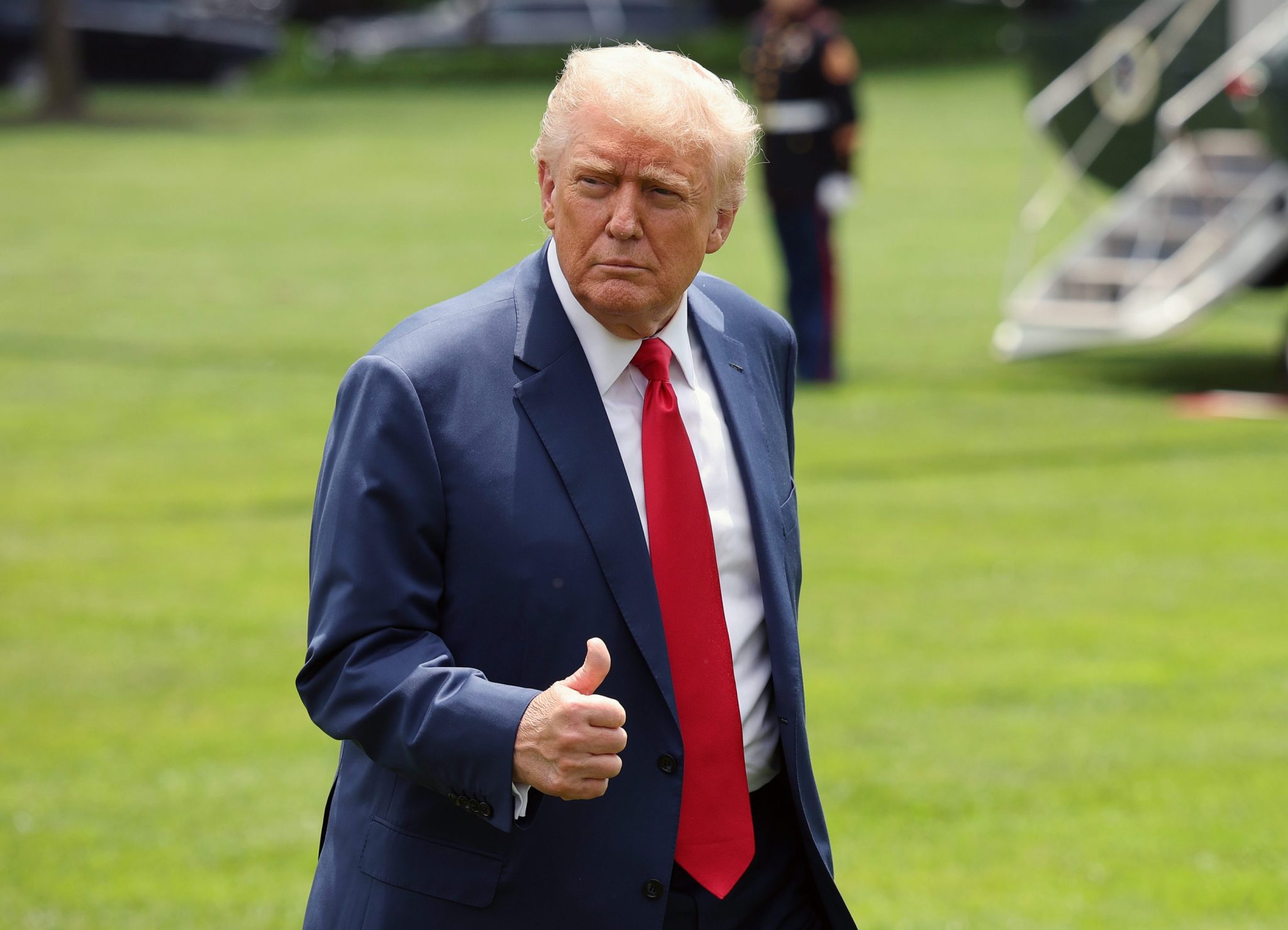Trump’s ‘done’ deal with China just brings tariffs back to Liberation Day levels
U.S. President Donald Trump took to his social media platform, Truth Social, on Wednesday to proclaim that a deal with China was “done,” pending final approval from himself and Chinese president Xi Jinping.
The post followed days of trade talks in London, where Washington and Beijing tried to save an uneasy truce in their budding trade war, threatened by complaints about export controls and visa revocations.
Trump announced that the U.S. would charge a 55% tariff on Chinese goods, while Beijing would impose a 10% tariff on U.S. goods. He also proclaimed that China will continue to export magnets and rare earth materials, while the U.S. would allow Chinese students to continue studying the U.S.
Still, Asian markets weren’t thrilled by the news that a deal had, once again, been reached. Hong Kong’s benchmark Hang Seng Index closed down by about 1.4%, while Japan’s Nikkei 225 dropped by about 0.65%. China’s CSI 300 was essentially flat.
One reason for the chilly reception could be that China only officially commented on the deal in the late-afternoon Thursday Asia time. Lin Jian, a foreign ministry spokesperson said at a regular press briefing that both sides should “abide” by the consensus reached following the latest meetings in London. Lin also said China has always kept its word and delivered results.
Another reason might be that the deal—even in the form Trump characterized in his social media post—merely brings things back to the level proposed on April 2, or “Liberation Day.” Then, Trump announced a 34% “reciprocal tariff” on Chinese imports which, on top of a previously announced 20% tariff tied to Beijing allegedly not doing enough to stop fentanyl smuggling, hiked rates to 54%.
Tariffs on Chinese imports rose to a staggeringly high 145% after rounds of tit-for-tat retaliation. Yet economists think that even a 55% tariff is close to the level where most goods trade between the U.S. and China would be wiped out.
Shipping volumes were already starting to collapse in late April, as steep U.S. tariffs on China began to take effect. (These tariffs were mostly suspended as part of negotiations in Geneva.)
Analysts expect tariffs to cause a rise in inflation in the coming months, even though recent inflation data has come in cooler than expected.
Rare earths and student visas
Trump’s post also refers to two issues that have frustrated both sides since last month’s agreement in Geneva.
The U.S. has accused Beijing of being slow to facilitate exports of rare earths. China holds a dominant position in the production of these materials.
Auto companies have faced shortages of these materials ever since Beijing required companies to apply for a license if they wanted access to these goods.
Still, while China has agreed to restore rare earth exports, the Wall Street Journal reports, citing sources familiar with discussions, that issued licenses will only last for six months. In return for Beijing easing rare earth controls, the U.S. reportedly agreed to relax some of its own export restrictions on goods like jet engines and ethane.
In his post, Trump also pledged to allow Chinese students to continue studying in the U.S.
On May 28, Secretary of State Marco Rubio said the U.S. would revoke the visas of Chinese students with ties to the Chinese Communist Party, or those working in “critical fields,” normally used to refer to those working in tech or the sciences. He also added that the State Department would enhance scrutiny of all visa applications from mainland China and Hong Kong.
There are around 280,000 Chinese students currently studying in the U.S. Higher education is a U.S. export.
In his Wednesday post, Trump said that he had “always been good” with Chinese students attending U.S. universities.
Mixed messaging
U.S. investors on Wednesday were cool to Trump’s announcement of his “done” deal. The S&P 500 dipped by 0.27%, while the Nasdaq 100 fell by 0.5%.
As of 4:00 a.m. Eastern time, S&P 500 futures are down by 0.4%.
The 90-day window for U.S. trading partners to negotiate a deal to avoid Trump’s “Liberation Day” tariffs is fast closing. Unless the U.S. extends the tariff pause, which applies to all countries except China, import duties will rise far beyond the current flat 10% rate in early July.
On Wednesday, U.S. Treasury Secretary Scott Bessent said that the U.S. will extend the pause for countries negotiating “in good faith.”
Yet in comments to reporters on Wednesday, Trump suggested that he was prepared to make an ultimatum to trading partners, unilaterally setting a tariff rate in what the president characterized as a binary take-it-or-leave-it deal.
So far, the U.S. has only managed to successfully negotiate a deal with the U.K. Officials are currently talking with several other economies, including India, Japan, South Korea and the European Union.
Update June 12, 2025: This story has been updated to include comments from China’s Ministry of Foreign Affairs’ regular press briefing.
This story was originally featured on Fortune.com


© Win McNamee—Getty Images

